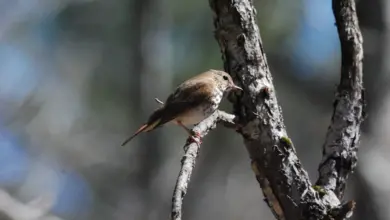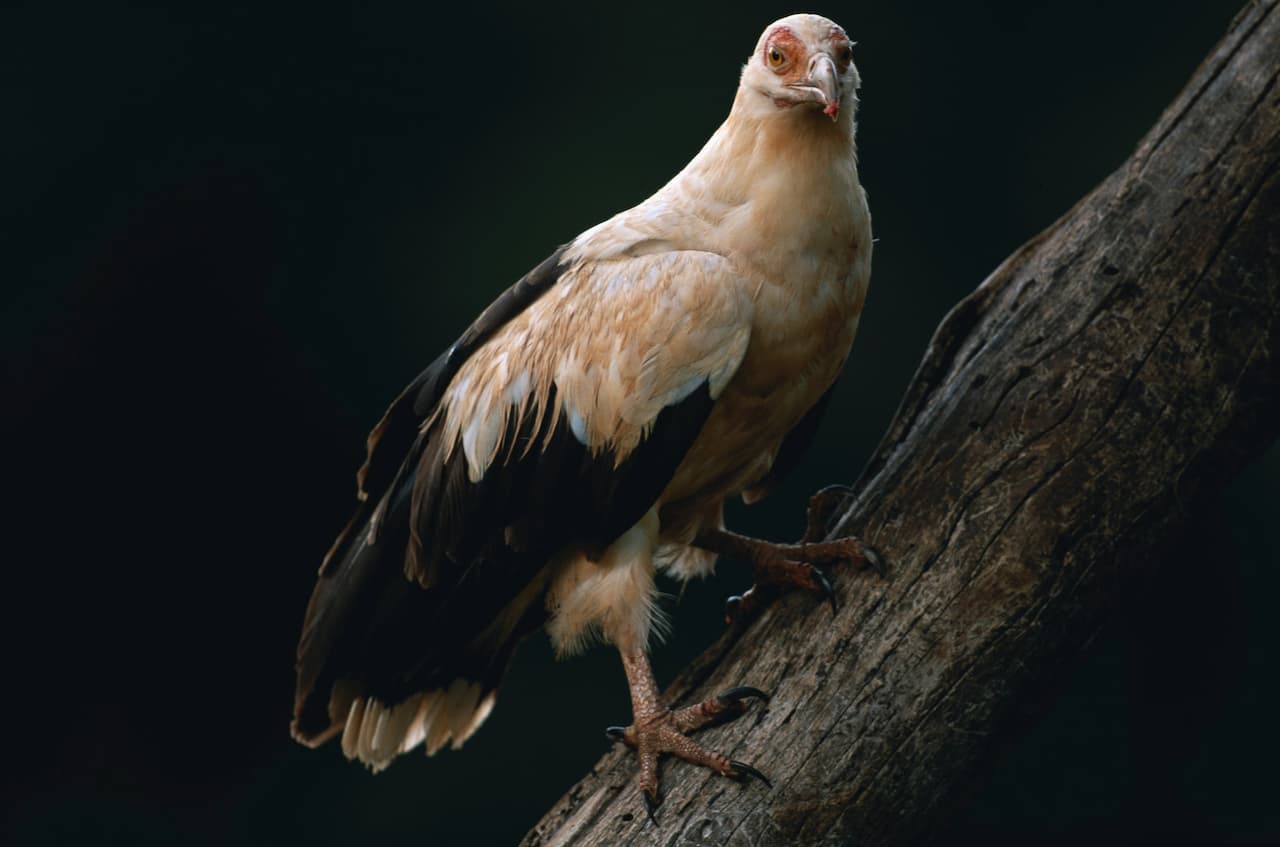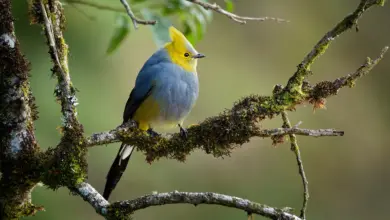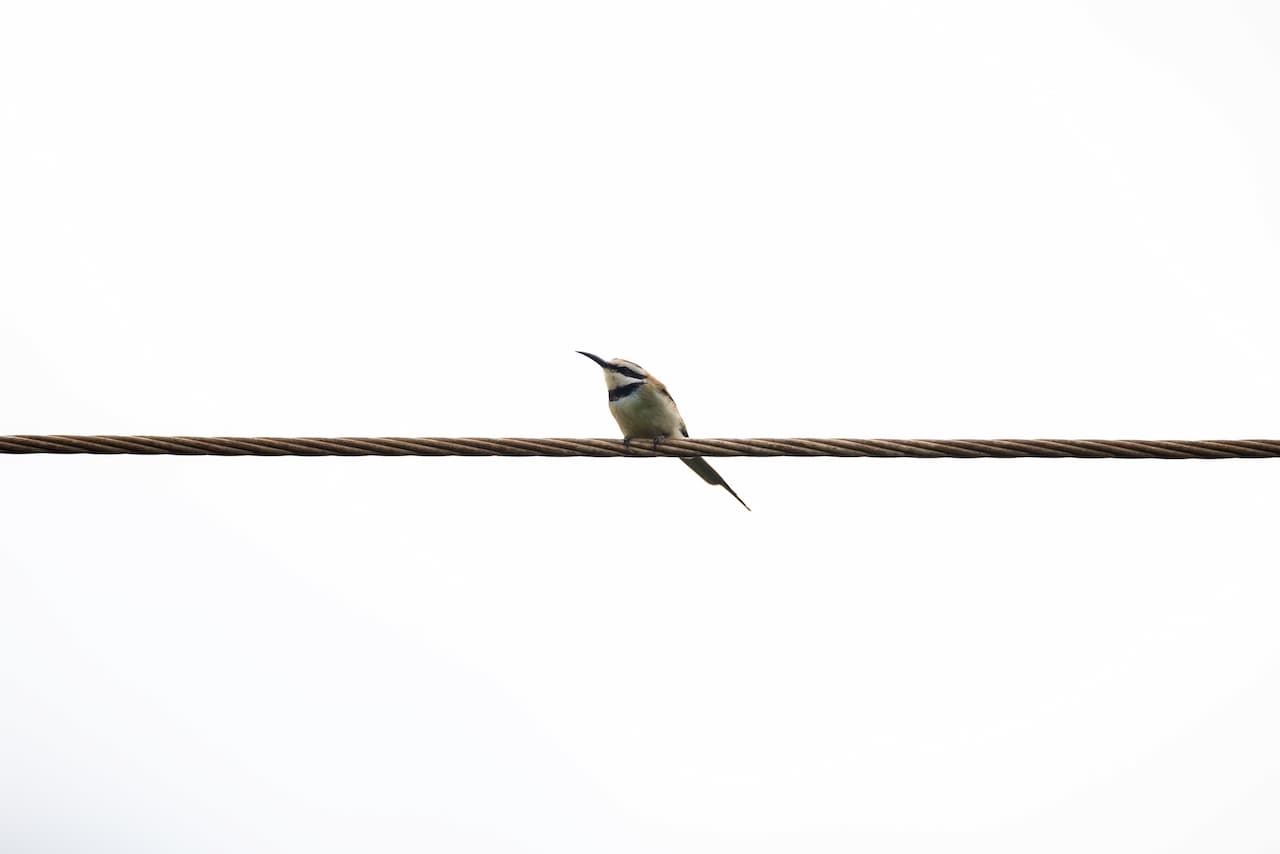The Timor Figbirds (Sphecotheres viridis) – also known as Green Figbirds – occur naturally in Indonesia and East Timor (for which they were named).
Some authorities include two other figbird species – the Wetar Figbird (Sphecotheres hypoleucus) and the Australasian Figbird (Sphecotheres vieilloti) – as subspecies. Further research is required to resolve its taxonomy.

Alternate (Global) Names
Czech: žluva fíková … Danish: Figenfugl … Dutch: Groene Vijgvogel … Finnish: viikunansyöjä … French: Sphécothère figuier … German: Feigenpirol, Timorfeigenpirol … Indonesian: Burungara Timor … Italian: Mangiafico di Timor … Japanese: chimo-rumeganekouraiuguisu, ??????????? … Norwegian: Grønnfikenfugl … Polish: figojad … Spanish: Papahigos, Oropéndola de Timor
Distribution and taxonomy
Timor Figbirds are endemic to the southeast Asian islands of Timor and Roti, in Lesser Sundas, where they are moderately common.
Outside the breeding season, they travel in flocks, foraging for food in the trees. The flocks are large, containing as many as 20 birds.
Habitat
They occur naturally in forests, woodlands, and scrublands; and they can frequently be seen in urban parks and gardens, especially if those areas contain fig trees and other fruit-producing trees. Often they are observed in mangroves—tropical evergreen trees on tidal coasts.
They will inhabit orchards, watercourses, parks, and gardens which include leafy trees and berry-producing plants.
While Figbirds generally remain in their habitats, they will travel to areas that provide food sources.
Description
A medium-sized bird, the Figbird is usually observed in its range and protected areas. They are highly sexually dimorphic (males and females can easily be visually identified).
Males have bare, bright red facial skin around the eye, which contrasts against a black crown. The back is olive-green and the plumage below (throat, chest, and belly) is yellow-olive.
Females are plain-colored, with brown and white, heavily dark-streaked bodies. The upper plumage is brown and the plumage below is off-white with brown streaking. There are no distinctive head markings, except for the grey facial skin.
The bill is greyish-black with a red base. The legs are flesh-colored.
Juveniles look like females, but the streaking below is generally not as bold.
Similar Species:
The Timor Figbird resembles the widespread Australasian Figbird, except for the smaller size and has paler crissum feathers (the feathers surrounding the cloaca of a bird).
Nesting / Breeding
Figbirds typically breed in small, loose colonies, constructing their nests nearby of each other in nearby trees.
The Figbird fashions a most unusual nest. The flimsy cup nest is shaped like a hammock and suspended from a horizontal fork in a tree near the end of a branch, between 6 and 20 meters from the ground. The nest is composed of vines and twigs.
The Figbird will breed from September to February, and it will lay 2-3 pale-green eggs with brown blotches, which are incubated for about 18 days to hatching. Both parents share the incubation duties and care for the young. The Figbird is an aggressive species, able to drive away nearly all predators, thereby affording protection to its nest sites. The young leave the nest when they are about 16 – 17 days old.
Diet / Feeding
Figbirds feed in flocks of around 20 birds.
Figs are a particularly popular food item (as suggested by their common name), although they will feed on most soft fruits and native berries in canopy trees. They consume Insects too.
They also have been known to eat nectar and seeds.
Calls / Vocalizations
An outgoing group, their call resembles a loud, descending ‘chiew.’ Australasian Figbirds have in their repertoire of sounds many different short calls and are also able to imitate the calls of other birds. They will mimic parrots and some species of orioles.
Their vocalizations are mainly a series of simple whistles and noisy chattering.
Species Research by Sibylle Johnson
Please Note: The articles or images on this page are the sole property of the authors or photographers. Please contact them directly concerning any copyright or licensing questions. Thank you.




